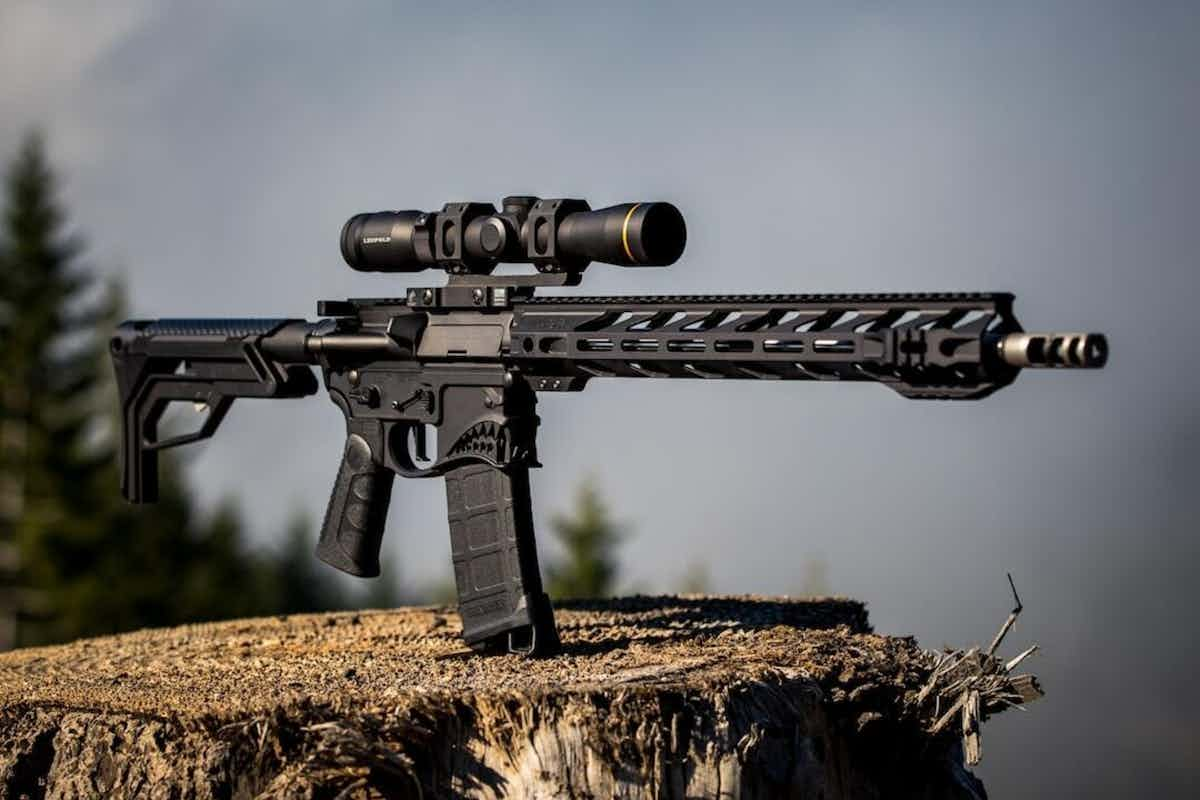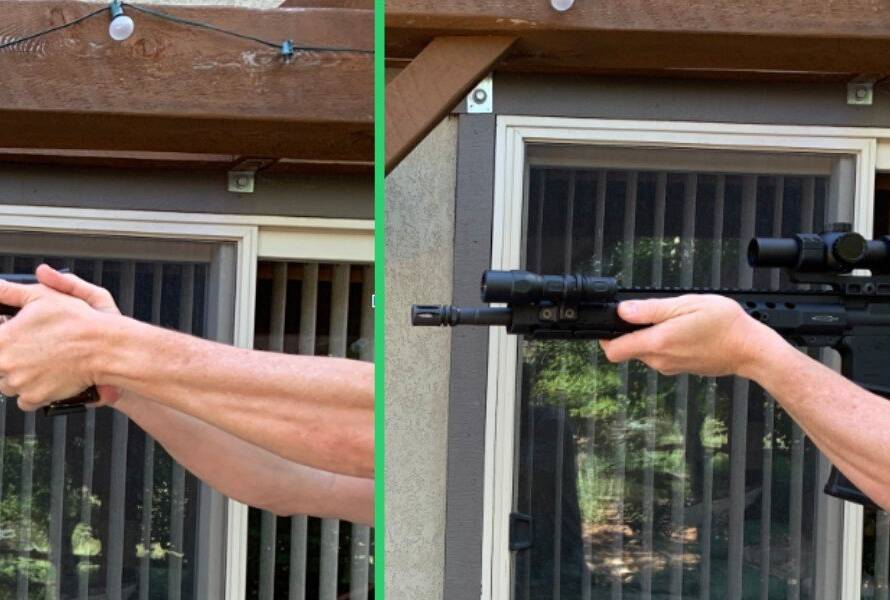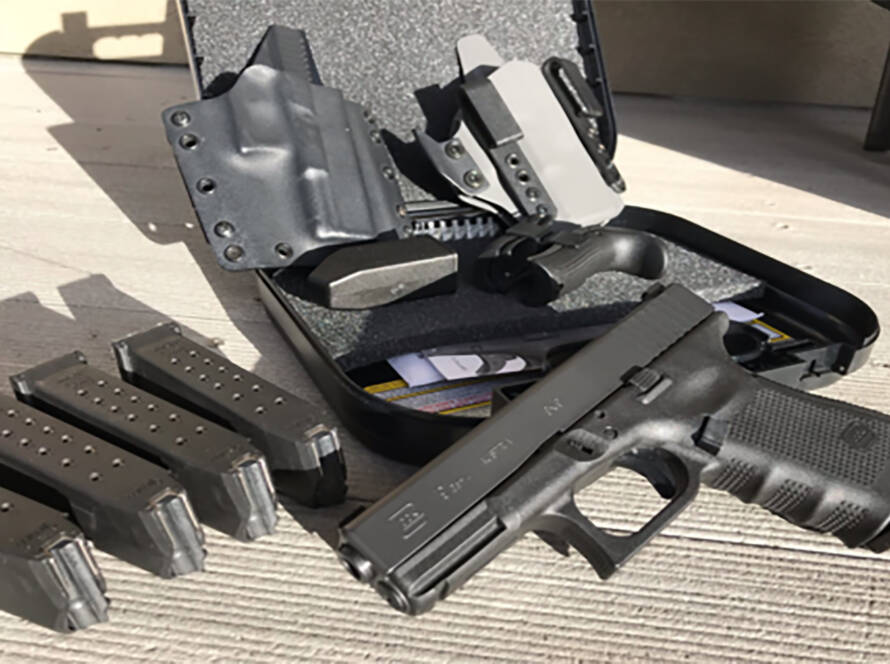Nearly one-third of Americans own a firearm, and many gun owners use optics to improve their shooting accuracy and experience. However, brand-new optics can be costly, leading some to consider the option to buy used optics for a more budget-friendly solution. When buying used, though, it’s crucial to know what to inspect to avoid potential issues.
In this used optics buying guide, we’ll cover the key areas to check before purchasing a used optic, including lens quality, functionality, and durability.
At RKB Armory, we’re committed to helping firearm owners find reliable gear they can trust. Read on for our top tips to inspect and choose the best used optics for your needs.
What Are Optics in Firearms?
Simply put, optics are essential tools that enhance the shooting experience by improving accuracy and target acquisition.
Generally, optics refer to devices that utilize lenses and light to magnify distant objects, allowing shooters to see their targets more clearly. The most common types of optics include scopes, red dot sights, and binoculars, each serving specific purposes in different shooting scenarios.
Scopes are often used for long-range shooting, providing variable or fixed magnification to help identify and engage targets at significant distances. Red dot sights are popular for close-quarters shooting, offering a simple aiming point without magnification, which allows for quick target acquisition. Binoculars can also be considered optics, providing magnification for observation in various settings, from hunting to birdwatching.
In addition to magnification, optics may feature coatings that improve light transmission, reduce glare, and enhance image quality. Taking the time to consider the different types of optics and their functions can help firearm owners choose the right equipment for their needs, ultimately improving their shooting performance and enjoyment.
General Exterior Condition
When inspecting optics for purchase, the first step is to carefully examine the overall exterior condition. Carefully check the optic’s body for visible signs of wear, like scratches, dents, or scuffs.
Minor cosmetic imperfections are common and usually don’t affect performance, but larger or deeper marks could suggest rough handling or accidental impacts. This may mean the optic has been dropped or used in challenging conditions, potentially affecting its reliability.
It’s also helpful to look for missing or damaged parts, such as adjustment caps, screws, or protective covers. Missing pieces can compromise functionality and may require costly replacements to restore the optic fully.
Finally, look for any signs of moisture or corrosion on metal surfaces, particularly around seams and seals. Corrosion can indicate that the optic’s seals are compromised, allowing water or dust to enter internal components, which may impact performance.
Lens Quality and Integrity
It’s also essential to closely examine the lens quality and integrity. You’ll want to check both the front and rear lenses for any scratches or chips. Minor scratches on the lens surface are generally acceptable, but deep scratches or chips can affect the optic’s clarity and durability, potentially causing distortion in your field of view.
Pay attention to the lens coatings as well since they play a vital role in light transmission and image quality. If the coatings appear faded, scratched, or patchy, it might mean the optic has seen heavy use. Worn coatings can lead to reduced brightness and sharper image quality, which may be especially noticeable in low-light conditions.
Additionally, it’s worth looking for any signs of internal fogging or condensation inside the lenses. Fogging usually points to compromised seals, which could mean the optic isn’t fully waterproof, making it less reliable in wet or humid environments.
Testing Optic Functionality
When evaluating a used optic, it’s equally important to test its functionality to ensure it performs as expected.
You should begin by examining the reticle for clarity and proper alignment. A clear, centered reticle without any blurring or defects is essential for accurate targeting. Any fading or discoloration in the reticle could indicate damage or wear that may interfere with precision.
It’s also beneficial to test the windage and elevation adjustments. You can do this by gently turning the turrets and observing their responsiveness and smoothness. If the turrets feel stiff or uneven or don’t produce a clear click when turned, this could signal wear or mechanical issues that could impact the optic’s reliability.
For optics with illumination features, testing the brightness settings is also recommended. You should ensure the illumination works evenly across all settings and that there’s no flickering. Inconsistent brightness can mean battery or electrical issues that may require repairs.
Mounting System and Compatibility
In addition to the optic’s body and lenses, checking the mounting system is necessary for ensuring that the optic will securely attach to your firearm. You should examine the mounting base and any included rings or clamps for signs of wear, such as:
- Worn-down threads
- Stripped screws
- Dents
Excessive wear on these parts may suggest that the optic has been frequently installed and removed, which can weaken the mount’s grip and stability.
It’s helpful to ensure that the mounting system is compatible with your firearm. Different optics are designed for different rail systems, so confirming this match can save you from purchasing additional adapters. Look for any indicators of past modifications, as these could affect the optic’s ability to attach securely or even cause damage to your firearm.
Finally, consider testing the mounting system’s fit on a comparable rail, if possible. A snug, secure fit is essential for maintaining zero and accuracy when firing, so a loose or wobbly connection is a red flag.
Verify Magnification and Focus
Next, verifying the magnification and focus capabilities helps to ensure that the optic will meet your needs. You should begin by checking the advertised magnification level against the actual performance. If the optic claims to provide a certain level of magnification, it’s important to confirm that it delivers that clarity and distance accurately.
Testing the focus is also vital. You should adjust the focus dial and look through the optic to ensure that the image is clear at various distances. Any blurriness or difficulty in achieving a sharp image can indicate internal issues that may affect performance. It’s helpful to check both near and far distances to ensure the optic is versatile and functions well in different situations.
Additionally, when possible, you may want to try the optic on a shooting range or a similar environment to assess its performance in real conditions. This practical test can reveal any discrepancies in magnification or focus that might not be apparent during a simple visual inspection.
Final Tips from RKB Armory
When purchasing used optics, a few final tips from RKB Armory can help ensure you make a smart investment. First, consider buying from reputable sellers or dealers who specialize in firearms and optics, like RKB Armory. Our commitment to quality means you can trust that our products have been carefully vetted for performance and reliability.
Additionally, consider compatibility with your firearm and intended use. Different shooting scenarios require different types of optics, so ensure that the optic you choose matches your needs. At RKB Armory, we’re here to help you navigate the used optics market, offering expertise and guidance to make your purchase easier.
Benefits of Buying Pre-Owned Optics
Purchasing pre-owned optics can be a smart choice for firearm enthusiasts looking to enhance their shooting experience without breaking the bank. Buying used optics offers several advantages that can make your investment worthwhile.
Cost Savings
One of the most significant benefits of buying pre-owned optics is the cost savings. Used optics typically come at a lower price than new models, allowing you to access high-quality products without exceeding your budget.
These savings can be especially beneficial for shooters who want to invest in premium brands or advanced features that may otherwise be out of reach.
Availability of Premium Brands
Another advantage of buying pre-owned optics is the ability to find premium brands and models that may no longer be available new.
Many seasoned shooters upgrade their equipment regularly, which often results in excellent pre-owned options on the market. This means you can find high-end optics at a fraction of the original price, providing superior performance and durability.
Reduced Depreciation
Buying used optics also allows you to avoid the steep depreciation that occurs when purchasing new items. Once a new optic is taken out of the box, it loses value immediately.
By purchasing pre-owned, you can retain more of your investment while still enjoying quality optics that meet your shooting needs.
Sell or Buy Used Optics With Us
To sum up, purchasing pre-owned optics can provide significant advantages, from cost savings to access to premium brands. At RKB Armory, we make it easy to buy used optics with confidence. Our commitment to quality ensures that you get the best value for your investment.
Whether you’re looking to enhance your setup or sell your used gear, trust us for a smooth experience. Start buying optics safely with RKB Armory today and elevate your shooting experience. Plus, if you have any questions about the buying or selling process, don’t hesitate to get in touch, as we’re always here to help.





